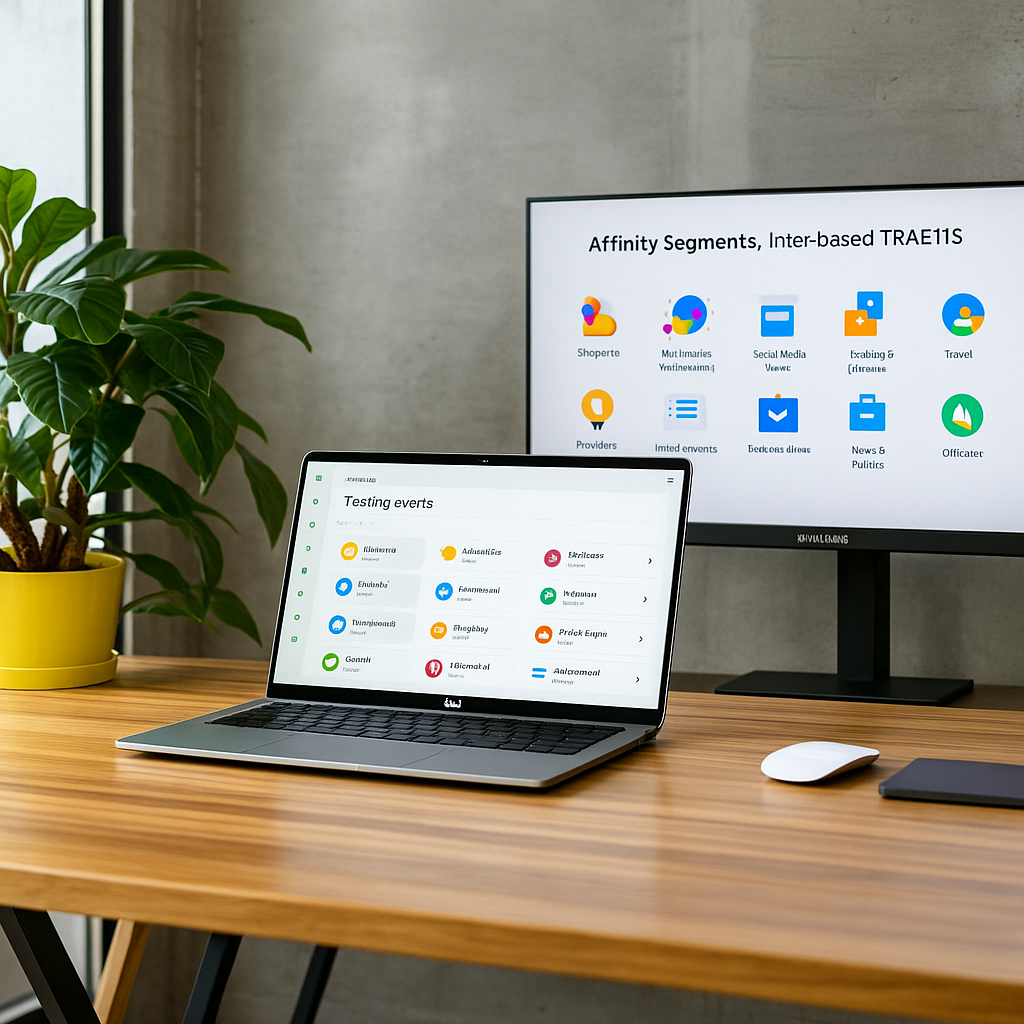Understanding Google Ads Affinity Segments and Interest-Based Targeting
Google Ads provides tools that help advertisers connect with audiences based on interests and behaviors, with affinity segments and interest-based targeting as key options. Affinity segments group users by long-term passions and lifestyle choices, such as sports enthusiasts or tech fans, enabling brands to reach people with consistent interest in specific topics. Interest-based targeting focuses on recent user behaviors, capturing those actively exploring particular products or services. These methods allow advertisers to tailor messaging more precisely, increasing engagement and conversion potential.

Affinity Segments vs. Interest-Based Targeting
Affinity segments categorize users based on enduring interests and lifestyle preferences, derived from aggregated data showing consistent behaviors like frequent visits to sports or technology sites. This long-term view suits brand awareness campaigns and messaging aimed at building loyalty.
Interest-based targeting zeroes in on recent user activity, identifying those showing immediate intent or curiosity about specific topics or products. It adapts dynamically as browsing habits change, making it ideal for campaigns focused on driving conversions or promoting timely offers. For example, users researching travel destinations or comparing smartphones can be targeted with relevant ads.
Benefits and Updates
Affinity segments help reach broad yet relevant audiences, while interest-based targeting narrows focus to users closer to purchase decisions. This layered approach enables efficient budget allocation and messaging tailored to audience mindset.
Updates in 2025 have improved the granularity and accuracy of these tools, providing deeper insights and greater control over audience selection. This allows marketers to align creative strategies with audience intent, optimizing campaign outcomes.
Implementation Tips
Effective use requires clear campaign goals and understanding audience behavior. Regular analysis of performance data helps identify which segments yield the best engagement and conversions, allowing for refined targeting. Combining these options with other Google Ads features, such as custom intent audiences or remarketing lists, can enhance results.
Frequently Asked Questions
How do affinity segments differ from interest-based targeting?
Affinity segments reflect long-term passions and lifestyle habits, suitable for building brand recognition and emotional connection. Interest-based targeting captures recent activity, ideal for capturing intent and driving conversions.
When should each be used?
Use affinity segments for awareness and loyalty campaigns; use interest-based targeting for conversion-focused or timely promotions. Combining both addresses different stages of the customer journey.
How to measure effectiveness?
Track engagement metrics like click-through and conversion rates within each segment. Regularly analyze data and adjust targeting as user behavior shifts. Layering targeting options can reveal new opportunities.
What impact have recent updates had?
The 2025 improvements increased precision and granularity, offering deeper audience insights. This helps tailor campaigns more confidently, reaching relevant users without wasting budget.
Summary
Google Ads affinity segments and interest-based targeting enable advertisers to connect with audiences based on long-term interests and immediate behaviors. Understanding their distinct advantages and leveraging recent enhancements allows marketers to create relevant campaigns aligned with various customer journey stages. Ongoing analysis and thoughtful combination of these tools help ensure advertising efforts are efficient and effective, driving stronger engagement and better results.
For the full article by Ginny Marvin, visit Search Engine Land.
“These targeting options help advertisers connect with potential customers who are more likely to engage with their ads, leading to higher conversion rates,” as noted by Ginny Marvin in the original article.













.png)

